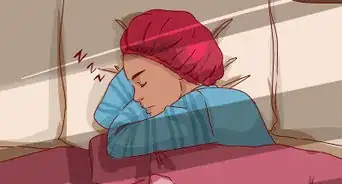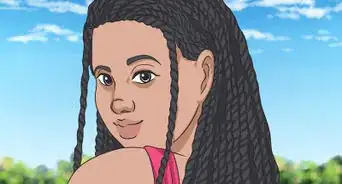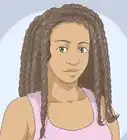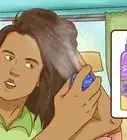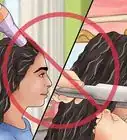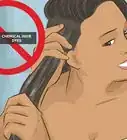This article was co-authored by Cebile Dube, a trusted member of wikiHow's volunteer community. Cebile Dube is a Professional Hair Stylist who specializes in Afro-textured hair.
wikiHow marks an article as reader-approved once it receives enough positive feedback. In this case, 89% of readers who voted found the article helpful, earning it our reader-approved status.
This article has been viewed 328,434 times.
Learn more...
Deep conditioning seems simple enough, right? You slap on some conditioner, wait a few minutes, rinse out, and voila! Right? Wrong. Deep conditioning is vital when it comes to restoring moisture to our strands, but many of us have been doing it halfheartedly, not by any fault of our own.
Steps
Deep Moisturizing Conditioning
-
1Choose a moisturizing conditioner. Moisturizing conditioner is ideal for most African hair, especially if the hair is dry and brittle, and breaks easily when brushed. (If the hair stretches before breaking, read the instructions for protein conditioning, below.) The "moisturizing" label on the front is a good start, but it's best to look at the ingredients list and instructions:[1]
- Ingredients that contain protein should be avoided in a moisturizing conditioner. This includes amino acids, casein, cholesterol, collagen, keratin, oat flour, and panthenol.
- If the directions say to leave on for 2-5 minutes and rinse, this is not a deep conditioner. Look for a product intended to be left on for at least 15–20 minutes.
-
2Purchase a leave-in conditioner. A leave-in conditioner will keep your hair in good shape between washing sessions. Buy one in addition to the other treatment(s) you selected.
- A moisturizing leave-in conditioner is usually the best choice for African hair.
Advertisement -
3Consider a steam treatment. Now that you've selected your product, decide which type of treatment to use. One option is a steam treatment, which lifts and opens the cuticles on the hair strand, allowing your hair to absorb more conditioner. This is ideal for dry, brittle hair, but more than two steam treatments a month may cause hygral fatigue. Here's a step by step explanation:[2]
- Wash you hair and gently squeeze it until damp, but not soaking wet.
- Rub in deep conditioner. Focus on the ends, which are the weakest point, but condition all the way to the roots as well. Do not apply on the scalp.
- Sit under the hair steamer for one complete cycle. If you don't own one, wrap hair in a hot, wet towel and cover with a plastic bag or shower cap for 15-20 minutes.
- Rinse out conditioner with cold water. This closes the cuticle layer again, laying them flat to seal conditioner in and let strands glide past each other with minimal tangling. This also gives the hair a nice sheen.
- Apply a moisturizing leave-in conditioner, then style.
-
4Trap heat overnight instead. Many people find this method uncomfortable, but it's a good choice if you have dry, coarse, brittle hair. Also, this method can be used more often than the steam treatment without causing damage. Apply as follows, starting in the late evening:[3]
- Wash hair and squeeze until damp.
- Apply moisturizing conditioner. Never use a conditioner that contains protein, as this can harden the hair and break it if left in longer than instructed on the label.
- Cover with the thermal cap. If you don't have a thermal heat cap, use a plastic cap covered in a beanie or bandana.
- Sleep with the cap on.
- Cold rinse in the morning and apply a moisturizing conditioner before styling.
Restoring Protein with Conditioner
-
1Check your hair strength. Protein adds strength to damaged hair, especially hair treated with relaxers, bleach, or other harsh chemical treatments. However, they can also dry out your hair. Brush your hair and watch how the strands snap to find out whether protein will help or hurt:[4]
- If your strands stretch, then break, you need more protein.
- If your hair snaps off easily without stretching, look for conditioners that do not contain protein.
-
2Find a protein deep conditioner. Protein-heavy conditioners may be sold as "hair mayonnaise" or "protein conditioner." For a more accurate choice, check the ingredients. Conditioner ingredients with protein include amino acids, casein, cholesterol, collagen, keratin, oat flour, and panthenol. Of course, anything with the word "protein" in it is another good choice.[5]
-
3Dampen hair. Wash your hair, then gently squeeze it to remove excess moisture. Do not rub with the towel, which can cause damage.
-
4Apply the conditioner. Rub the product into your hair. The ends are usually most in need of strengthening, but rub all the way to your roots as well. You do not need to apply this to your scalp.
-
5Heat with a thermal cap or bonnet dryer. There are three different ways to "cook" a protein treatment into your hair:
- Cover with a thermal cap.
- Or cover with a plastic cap covered by a beanie or bandana. (This is essentially a homemade thermal cap.)
- Or cover with a plastic cap, then sit under a bonnet dryer. The plastic cap is necessary to avoid damage.
-
6Leave in according to label instructions. Always follow instructions that come with your protein treatment. Leaving it in too long will create hard, brittle hair, defeating the purpose.
-
7Rinse with cold water. Seal in the product with a cold rinse.
-
8Finish with a moisturizing leave-in conditioner. Protein can dry out your hair, so restore lost moisture with a moisturizing conditioner. Make sure this contains no protein.
Natural Deep Conditioning
-
1Wash your hair with lukewarm water. Hot water makes the hair even curlier and more unmanageable.
-
2Let an egg sit in your hair. Beat the egg, then massage it in thoroughly. Cover your hair with a plastic bag or a shower cap. Leave this in for about half an hour to feed your hair vital nutrients. Wash the egg out of your hair.[6]
- Because eggs contain protein, this treatment may not be ideal for weak hair that stretches and breaks when brushed.
-
3Massage in oil. You can use just about any kind of vegetable oil, but coconut oil and jojoba oil are recommended. Pour enough oil to fill about ¼ of a tea cup (about ⅛ measuring cup or 30mL). Massage this into your hair, replace the shower cap, and move on to the next step. This will soften your hair to a healthy, supple texture.[7]
- You can use sunflower oil or other cooking oils, but these may smell bad.
- You can even use an avocado if you have no oil.
-
4Steam the hair. This will "cook" the oil into your hair, restoring shine and flexibility. At the salon, all you need to do is sit under the dryer. At home, sit on a chair and let your head hang backwards with your hair over a bucket of boiling water. Either way, this takes about 30 minutes.[8]
-
5Rinse with warm water. Add a few drops of vinegar to the water to reduce dandruff.
-
6Blow dry. You need low heat setting to dry African hair so that hair does not become brittle. To dry quickly and effectively, clip your hair into several segments. For each segment, comb out and blow dry lines of hair one by one. Finish the whole segment before moving on to the next.
-
7Oil the hair with glycerin. Glycerin is the best of the best when it comes to African hair. This last step will protect your hair from breakage. What you have in the end is a head full of fluffy, shiny, kinky hair!
- Braid your hair afterward to help your hair grow.
Community Q&A
-
QuestionWhat can I use instead of glycerin?
 Community AnswerCastor oil, olive oil, or even avocado oil after applying a moisturizer.
Community AnswerCastor oil, olive oil, or even avocado oil after applying a moisturizer. -
QuestionHow can one treat hair that has dandruff?
 Community AnswerHot oil treatments. Wash your hair 2-3 times with shampoo. Condition the hair, and let the conditioner sit for 2-5 minutes. Rinse, then squeeze excess water. Oil your hair until hair feels moist enough for you, put on a shower cap, sit under the heat for 15-30 minutes, then rinse your hair with cool water to lock in the moisture.
Community AnswerHot oil treatments. Wash your hair 2-3 times with shampoo. Condition the hair, and let the conditioner sit for 2-5 minutes. Rinse, then squeeze excess water. Oil your hair until hair feels moist enough for you, put on a shower cap, sit under the heat for 15-30 minutes, then rinse your hair with cool water to lock in the moisture. -
QuestionIs there a way to grow my hair five inches in three weeks?
 Community AnswerNo, it is impossible. If you would like length in a short amount of time, consider extensions.
Community AnswerNo, it is impossible. If you would like length in a short amount of time, consider extensions.
References
- ↑ https://www.ebony.com/style/black-hair-protein-treatments/
- ↑ https://www.curlcentric.com/natural-hair-regimen/
- ↑ https://www.curlcentric.com/baggy-method/
- ↑ https://www.ebony.com/style/black-hair-protein-treatments/
- ↑ https://www.refinery29.com/en-ca/how-to-moisurize-natural-hair#slide-3
- ↑ https://www.bebeautiful.in/all-things-hair/everyday/care-for-permanently-straightened-hair
- ↑ https://www.onegoodthingbyjillee.com/coconut-oil-hair-conditioner/
- ↑ https://www.onegoodthingbyjillee.com/coconut-oil-hair-conditioner/
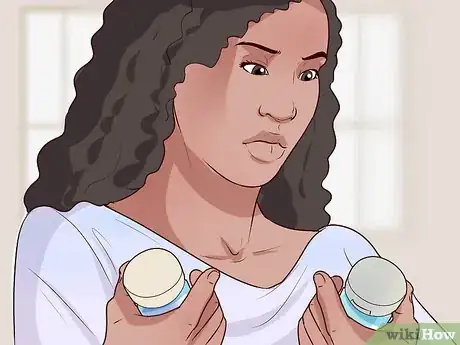
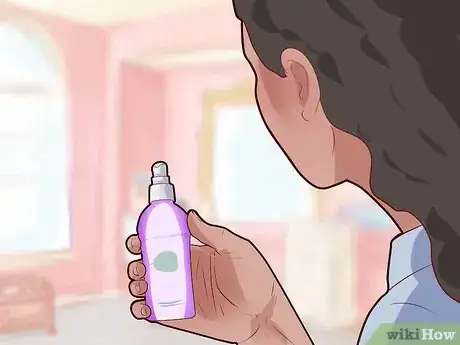
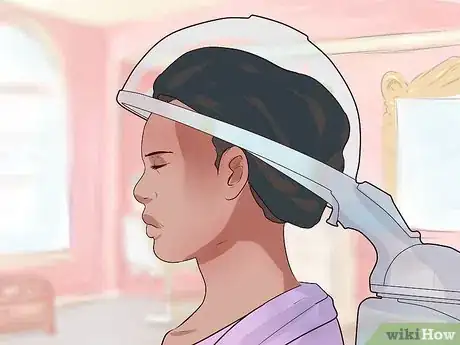
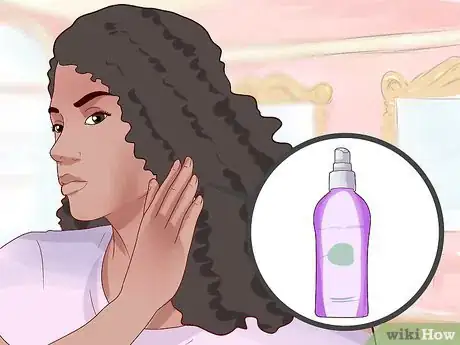
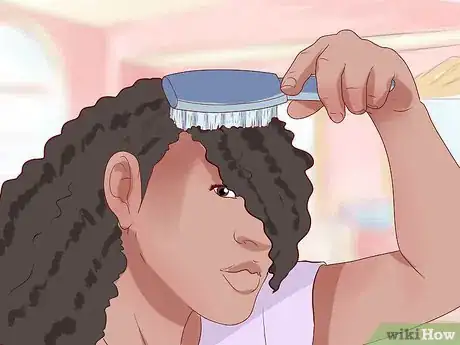
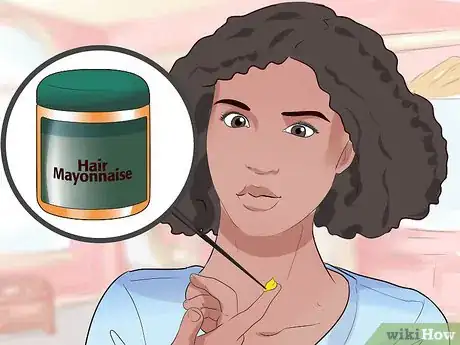
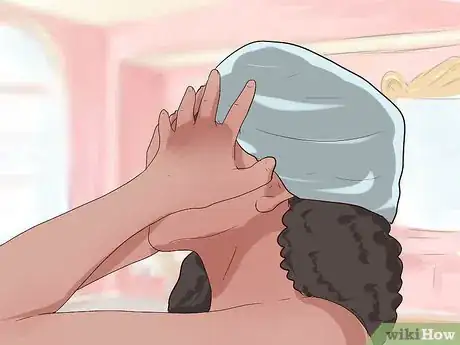
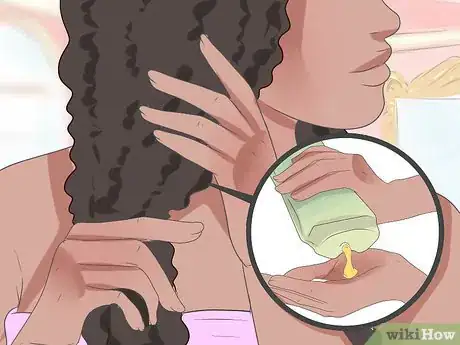
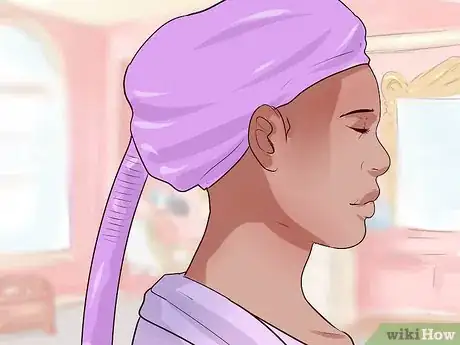
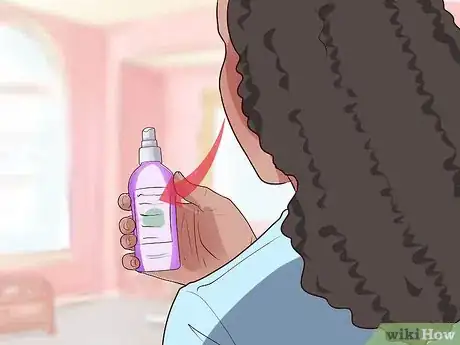
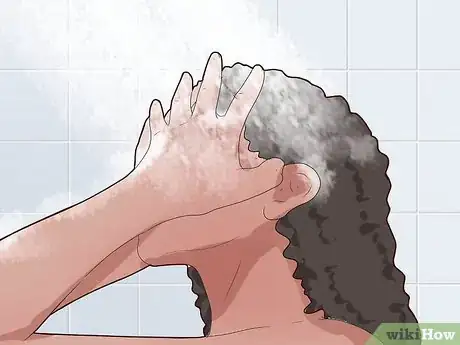
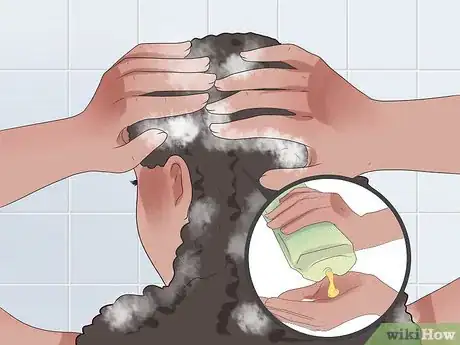
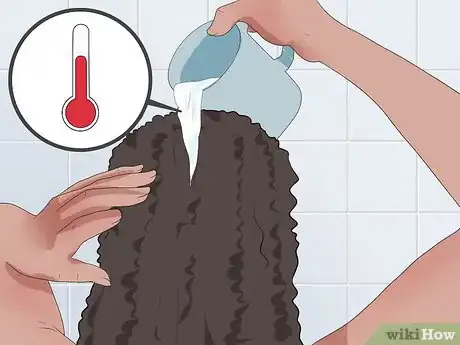
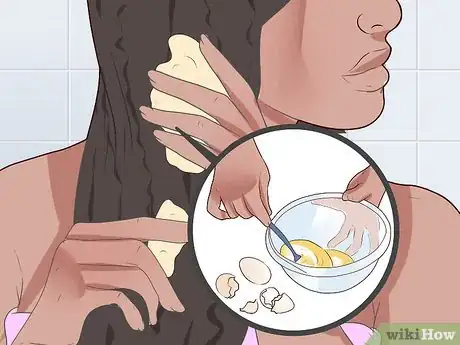
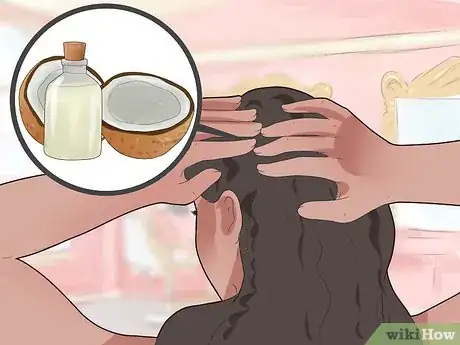
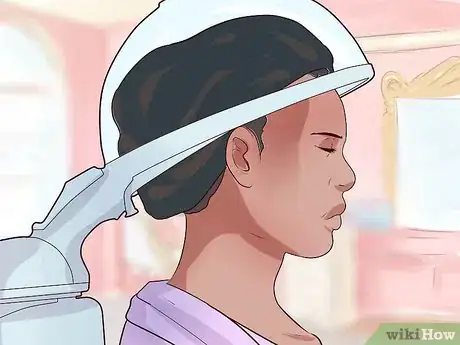
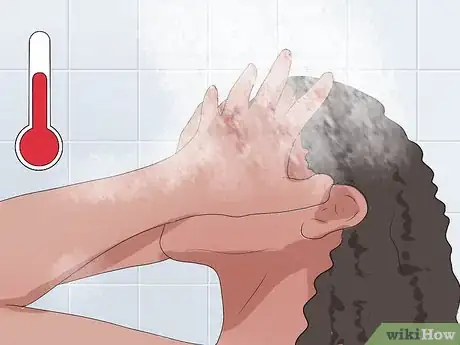
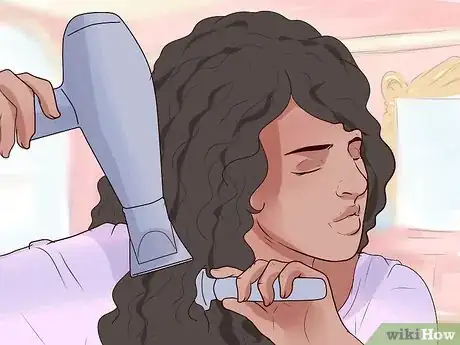
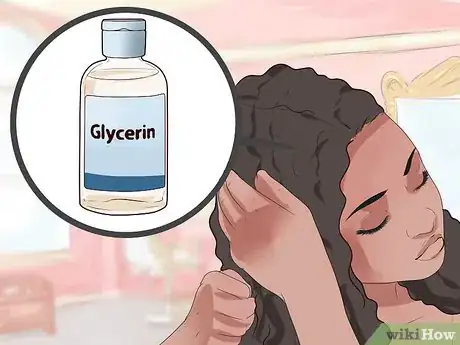

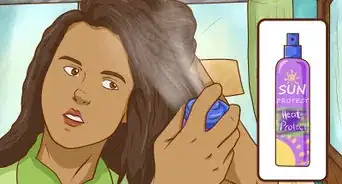
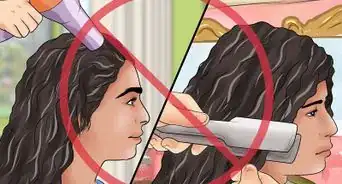
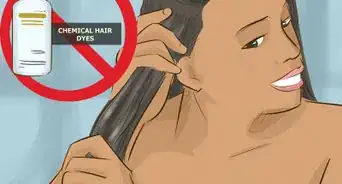
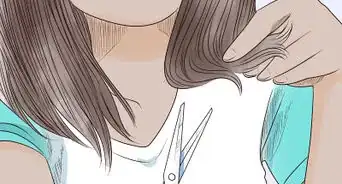
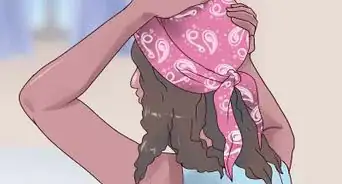
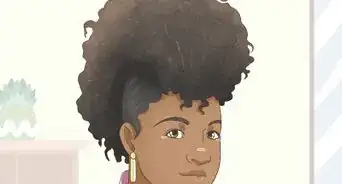
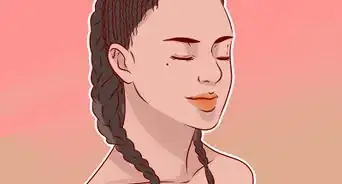
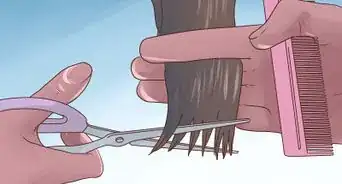
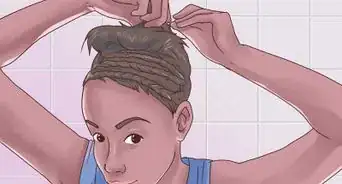
-Step-20.webp)
